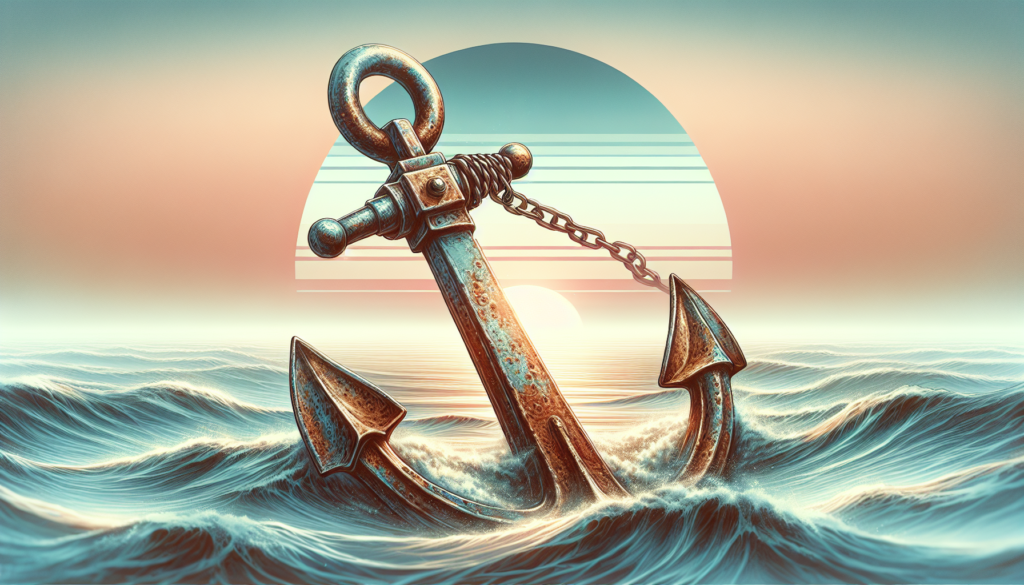Exploring the Fascinating World of Boat Anchors
Imagine being out on the open waters, feeling the gentle sway of the boat beneath you as the sun sets in the horizon. The only thing keeping you anchored in place is a simple yet crucial piece of equipment – the boat anchor. While often overlooked, anchors play a vital role in the world of boating, ensuring safety, stability, and control over the vessel. In this comprehensive guide, we will delve deep into the realm of boat anchors, exploring their history, types, uses, and much more.
The Evolution of Boat Anchors
Boat anchors have been around for centuries, with their origins dating back to ancient times. The earliest anchors were simple rocks or heavy objects tied to ropes, used by ancient sailors to secure their vessels in shallow waters. As maritime technology advanced, so did the design and functionality of anchors. One of the significant milestones in anchor evolution was the invention of the fluke anchor, also known as the “modern anchor,” which revolutionized the way boats were anchored.
Today, boat anchors come in a variety of shapes, sizes, and materials, each designed to suit different types of boats and water conditions. From traditional fluke anchors to innovative grapnel anchors, the world of boat anchors is diverse and ever-evolving.
The Different Types of Boat Anchors
When it comes to boat anchors, one size does not fit all. Different types of anchors are suited for various boating activities, water conditions, and vessel sizes. Some of the most common types of boat anchors include:
1. Fluke Anchors
Fluke anchors, also known as Danforth anchors, are one of the most popular types of anchors used by boaters. They feature a lightweight design with sharp flukes that dig into the seabed, providing excellent holding power in sandy or muddy bottoms.

2. Plow Anchors
Plow anchors, also called CQR anchors, are designed to provide strong holding power in a variety of seabed conditions, including rocky or weedy bottoms. Their plow-like shape allows them to dig deep into the seabed, providing reliable anchoring in challenging conditions.

3. Grapnel Anchors
Grapnel anchors are compact and easy to store, making them ideal for smaller boats or dinghies. They feature multiple hooks that can grab onto rocks, reefs, or other underwater structures, providing secure anchoring in rough waters.

The Science Behind Boat Anchors
While boat anchors may seem like simple devices, there is a science behind their design and function. The holding power of an anchor is determined by various factors, including its weight, shape, and the type of seabed it is anchored in. Understanding these factors is crucial for boaters to select the right anchor for their vessel and the prevailing water conditions.
One of the key principles behind anchor design is the concept of “fluke angle,” which refers to the angle at which the flukes of the anchor penetrate the seabed. A larger fluke angle typically results in better holding power, especially in soft or loose bottoms.
The Importance of Proper Anchoring Techniques
Proper anchoring is essential for the safety and stability of a boat. Improper anchoring can lead to drifting, dragging, or even capsizing in extreme cases. Boaters must follow best practices for anchoring, including selecting the right anchor for the conditions, using the appropriate scope (length of anchor rode), and setting the anchor properly to ensure a secure hold.
Additionally, boaters should be mindful of environmental considerations when anchoring, such as avoiding sensitive marine habitats or coral reefs. By anchoring responsibly, boaters can minimize their impact on the marine environment and preserve the beauty of our oceans for future generations.
The Future of Boat Anchors
As technology continues to advance, so does the innovation in boat anchor design. New materials, such as lightweight alloys and composite materials, are being used to create anchors that are both strong and durable. Additionally, advancements in anchor technology, such as automatic anchoring systems and GPS positioning, are making anchoring easier and more efficient for boaters.
Looking ahead, the future of boat anchors is bright, with continued advancements in design, materials, and technology. Boaters can expect to see more efficient, reliable, and environmentally friendly anchors in the years to come.
Expert Opinions
According to marine industry experts, the key to effective anchoring lies in understanding the characteristics of different anchor types and selecting the right anchor for the specific boating conditions. By investing in a high-quality anchor and following proper anchoring techniques, boaters can ensure a safe and enjoyable boating experience.
Common Misconceptions
One common misconception about boat anchors is that bigger is always better. While a larger anchor may provide more holding power in certain conditions, it may not be suitable for all types of boats or water depths. It is essential for boaters to consider factors such as vessel size, anchor weight, and seabed conditions when selecting an anchor.
Conclusion
To wrap things up, boat anchors are an essential piece of equipment for boaters, providing stability, safety, and control over their vessels. From the ancient sailors who used rocks and ropes to modern boaters with high-tech anchors, the evolution of boat anchors has been a fascinating journey. By understanding the different types of anchors, the science behind their design, and the importance of proper anchoring techniques, boaters can ensure a safe and enjoyable time on the water.
As we look to the future, the world of boat anchors is poised for continued innovation and advancement. By staying informed about the latest anchor technologies and best practices, boaters can navigate the waters with confidence, knowing that their anchor will keep them securely in place.



